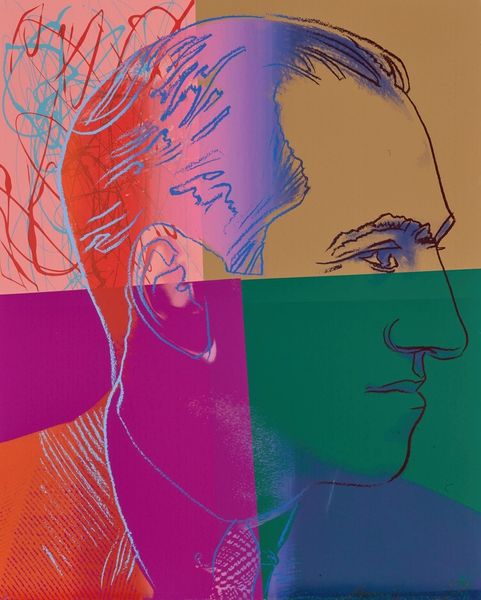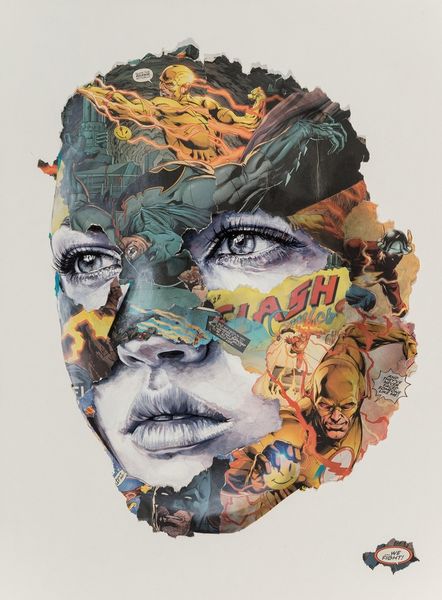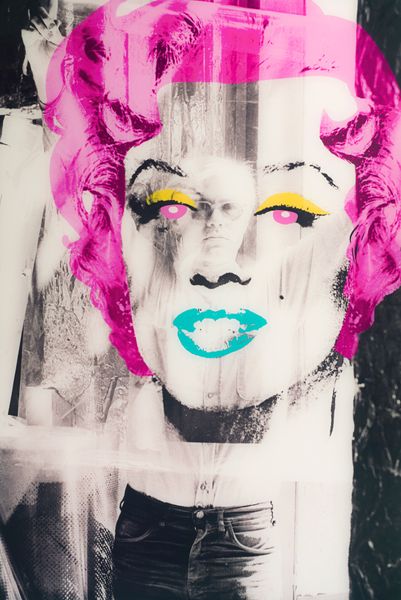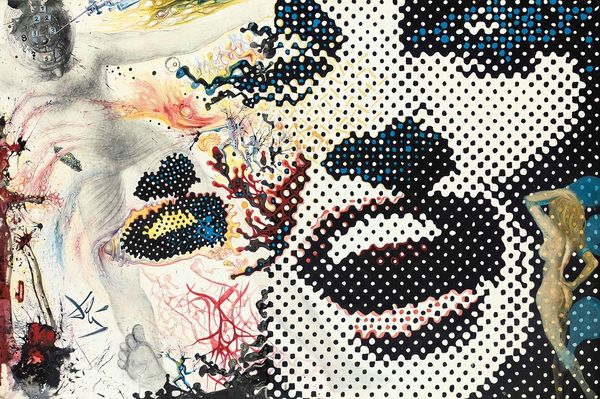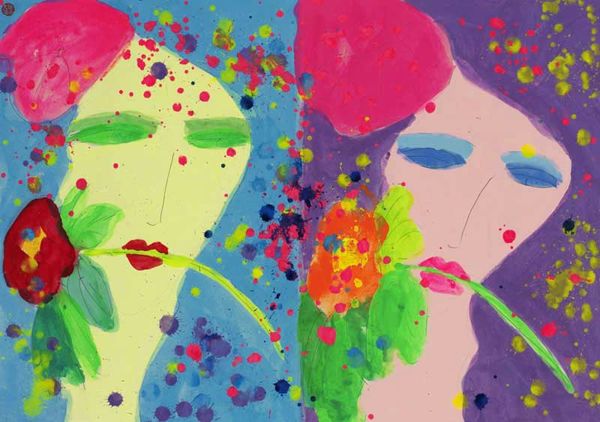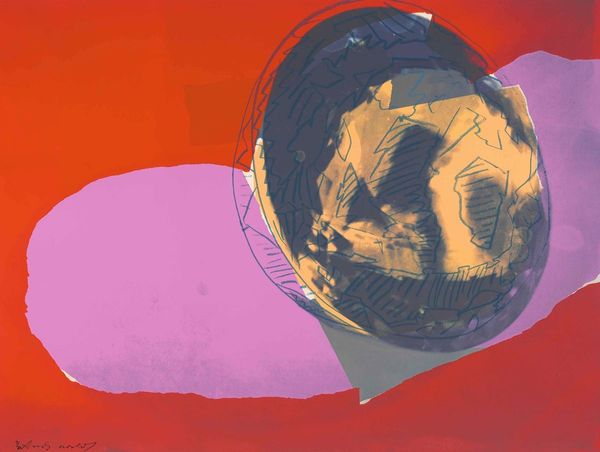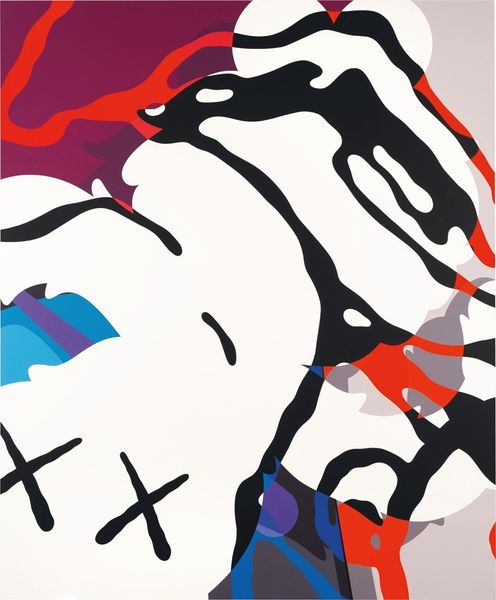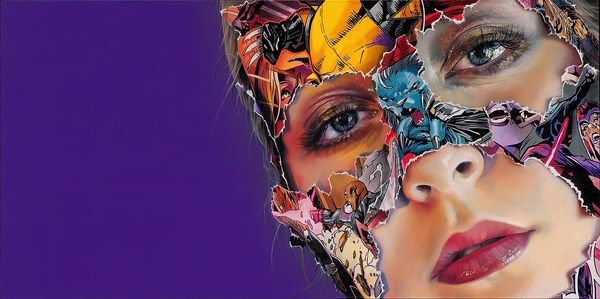
Copyright: Modern Artists: Artvee
Curator: This piece leaps right out at you, doesn't it? Immediately hits you with these vibrant colors! Editor: Yes, indeed. This acrylic and spray-can work, entitled "Sarah Bernhardt," comes to us from Andy Warhol in 1980, squarely within his pop-art-influenced portraiture. Curator: Warhol always did know how to make an entrance. Those juxtaposed blocks of color are so jarring, yet so captivating. It’s almost as if he’s peeling back layers of identity or... masking them, I’m not sure which. And that portrait of Bernhardt, the original superstar... I love the sort of haunting, slightly aloof quality in her expression. She feels iconic and utterly unknowable all at once, doesn't she? Editor: Structurally, the painting uses overlapping geometric shapes—a deliberate act to dissect the figure—while fragmenting perception into its constitutive visual components. We have triangles bisecting the planes of the face and other features... It’s less a cohesive image, more a collision of sensory fragments in search of unity. Consider how Warhol subverts our classical assumptions about representation with pop sensibility. The high key magenta in the background sets an almost synthetic and artificial foundation on which to study the person as icon. Curator: See, that breakdown of “constitutive visual components” almost makes me gasp! Is that what our public presence becomes—deconstructed colors and geometric patterns when people reduce us into bite-sized portions of fame? Is it any wonder celebrities go mad under that sort of pressure?! Editor: Perhaps madness is beside the point. Note the tension that Warhol instigates. By fragmenting the traditional portrait, he doesn’t destroy but reveals. The color selection becomes the sign, and Bernhardt, the signified: a vibrant legend painted by cultural obsession. Curator: You know, looking at this portrait and thinking about the era it was produced in, you almost cannot disentangle Warhol from his moment. A man consumed by—and consummately commenting on—the ever-burgeoning spectacle surrounding fame in the late 20th Century... That gaze becomes an interrogation. Whose is it really? Bernhardt's or Warhol's reflecting hers? It's dizzying, in the best way possible. Editor: The questions this work opens up—ones we’ll continue asking long after our viewing has finished—might just be its greatest achievement. The canvas invites one to not only observe but contemplate, which in its best expression—a testament to great art—begs for new ways of seeing to emerge.
Comments
No comments
Be the first to comment and join the conversation on the ultimate creative platform.
